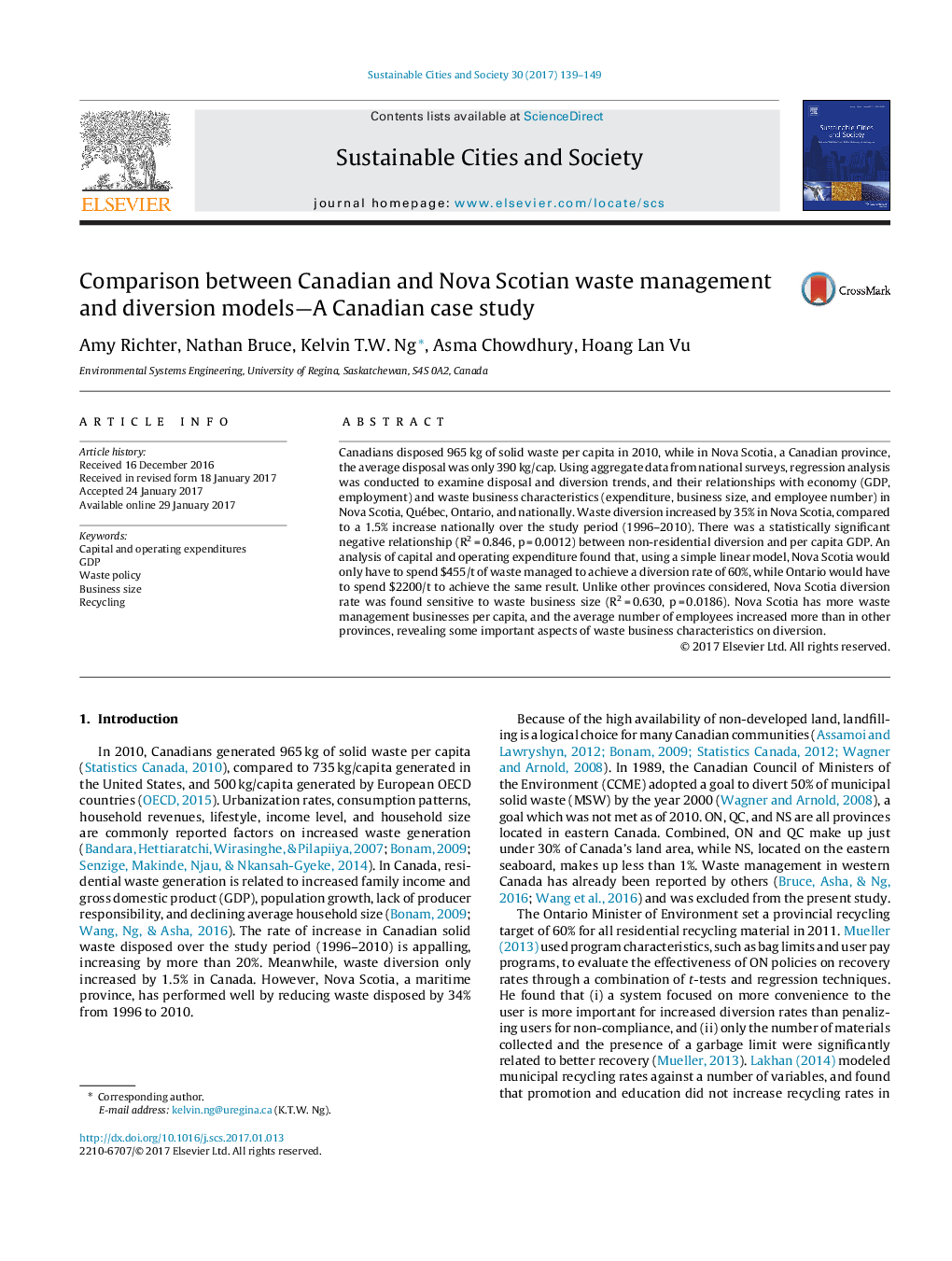| Article ID | Journal | Published Year | Pages | File Type |
|---|---|---|---|---|
| 4928146 | Sustainable Cities and Society | 2017 | 11 Pages |
Abstract
Canadians disposed 965 kg of solid waste per capita in 2010, while in Nova Scotia, a Canadian province, the average disposal was only 390 kg/cap. Using aggregate data from national surveys, regression analysis was conducted to examine disposal and diversion trends, and their relationships with economy (GDP, employment) and waste business characteristics (expenditure, business size, and employee number) in Nova Scotia, Québec, Ontario, and nationally. Waste diversion increased by 35% in Nova Scotia, compared to a 1.5% increase nationally over the study period (1996-2010). There was a statistically significant negative relationship (R2 = 0.846, p = 0.0012) between non-residential diversion and per capita GDP. An analysis of capital and operating expenditure found that, using a simple linear model, Nova Scotia would only have to spend $455/t of waste managed to achieve a diversion rate of 60%, while Ontario would have to spend $2200/t to achieve the same result. Unlike other provinces considered, Nova Scotia diversion rate was found sensitive to waste business size (R2 = 0.630, p = 0.0186). Nova Scotia has more waste management businesses per capita, and the average number of employees increased more than in other provinces, revealing some important aspects of waste business characteristics on diversion.
Keywords
Related Topics
Physical Sciences and Engineering
Energy
Renewable Energy, Sustainability and the Environment
Authors
Amy Richter, Nathan Bruce, Kelvin T.W. Ng, Asma Chowdhury, Hoang Lan Vu,
